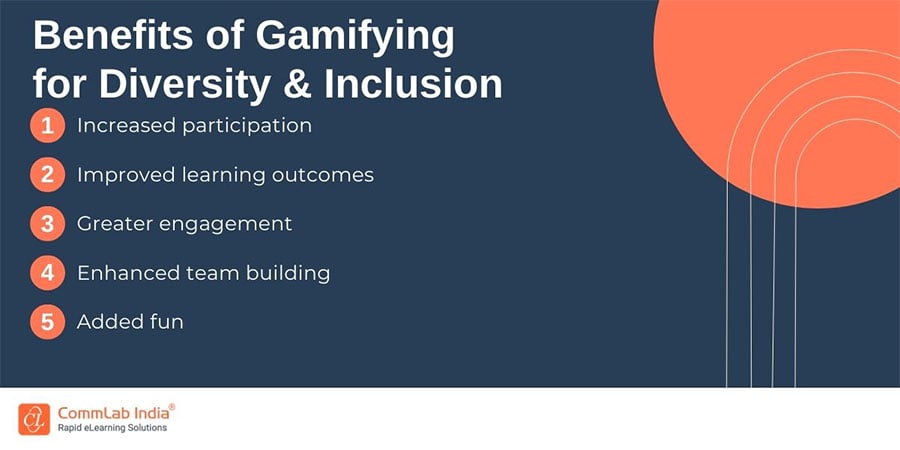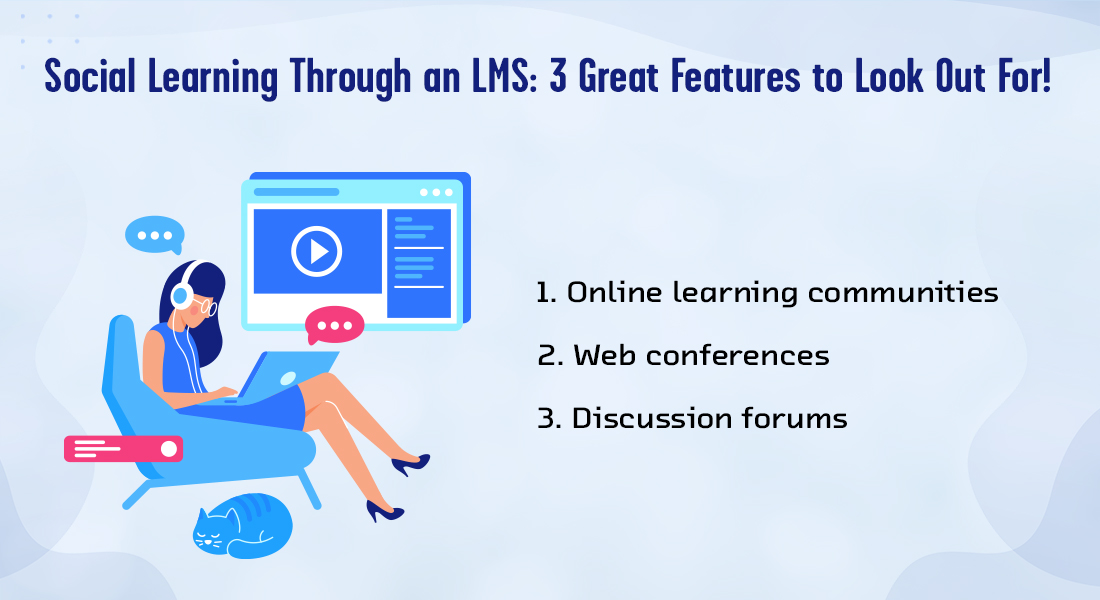Gamification for Diversity and Inclusion: The Challenges and Opportunities in Training

Gamification is an Instructional Design (ID) strategy that involves the use of game elements and design thinking to solve problems and engage users. It is a tool that can be used to promote diversity and inclusion (D&I) by creating an environment that is more engaging and fun for the learners.
There are many different ways to gamify an experience, some common elements include points, badges, leaderboards, and rewards. And when used to train employees on the complex topics of diversity and inclusion, gamification can be an extremely impactful.
Gamification for Diversity and Inclusion (D&I) Training: Level up your workplace culture!
Discover how game-based strategies can tackle challenges and unlock opportunities for a more diverse and inclusive environment. Boost engagement, creativity, and collaboration with this innovative approach!
Let us understand the impact –
Understanding the Impact of Gamifying for Diversity and Inclusion (D&I) Training
When it comes to diversity and inclusion training, organizations face many challenges. One of those challenges is understanding the impact that gamifying can have on these initiatives.
Organizations are increasingly turning to gaming elements to engage employees and promote learning and development (L&D). When properly designed, games can create an enjoyable and motivating experience while also imparting important skills and knowledge. However, when designing games for diversity and inclusion initiatives, there are a few key considerations to keep in mind.

First, it’s important to ensure that the game is accessible to all employees. That means taking into account different abilities, disabilities, cultural norms, and language barriers. The game should also be designed in a way that doesn’t reinforce any negative stereotypes or biases.
Second, the game should be engaging and enjoyable for all players. It’s important to find the right balance between competition and cooperation, as well as difficulty level. Employees should feel like they are making progress and seeing results from their efforts.
Finally, the game should be used as one part of a broader diversity and inclusion initiative. It’s not enough to simply introduce a game – there needs to be follow-up activities and support from senior leadership in order for real change to occur. By taking these factors into consideration, organizations can create games that have a positive impact on their online training efforts for diversity and inclusion.
→ Read Now: We Developed a Game-Based eLearning Course For A Pharma Major
Benefits of Gamifying for Diversity and Inclusion
When it comes to diversity and inclusion, gamification can be a powerful tool. By incorporating game-like elements into training and development programs, organizations can engage employees in new and innovative ways while also teaching them essential skills.

Some of the benefits of gamifying for diversity and inclusion include:
- Increased participation – Gamification can increase participation in training and development programs, especially among those who may be hesitant or less likely to participate otherwise.
- Improved learning outcomes – Game-based learning has been shown to improve learning outcomes and comprehension. When employees are actively engaged in learning, they are more likely to remember and apply what they’ve learned.
- Greater engagement – Gamification can lead to greater employee engagement overall. Employees who are actively engaged in their work are more likely to be productive and motivated, which can have a positive impact on the bottom line.
- Enhanced team building – Gamification can promote teamwork and collaboration, both of which are essential for a diverse and inclusive workplace. Through game-based learning, employees can learn how to work together effectively to achieve common goals.
- Added fun – Last but not least, gamification can make learning fun! When employees are enjoying themselves, they are more likely to stay engaged and motivated. A little bit of fun can go a long way in promoting a positive company culture that values diversity and inclusion.
Challenges of Gamifying for Diversity and Inclusion
When it comes to gamifying for diversity and inclusion, there are a few challenges that need to be considered. First and foremost, games need to be designed in a way that is accessible and inclusive for all players. This includes ensuring that the game mechanics are easy to understand and that the game can be enjoyed by people of all backgrounds and abilities.
Additionally, it is important to create a game that accurately represents the diversity of the real world. This means including characters and storylines that reflect the experiences of people from all walks of life.
Finally, when gamifying for diversity and inclusion, it is important to avoid any form of discrimination or stereotyping. Games should be fun and inclusive for everyone involved.
Opportunities of Gamifying for Diversity and Inclusion
Organizations are looking for more innovative and engaging ways to promote diversity and inclusion in the workplace. Gamification can be a powerful tool to help organizations achieve their goals.
Gamification can help organizations increase employee engagement, foster collaboration, and promote inclusion. When done correctly, gamification can create a safe and fun environment for employees to learn about and embrace diversity. By using game mechanics, organizations can encourage employees to think critically about issues of diversity and inclusion, and make positive changes in their own behavior.
Organizations should carefully consider their goals for gamifying diversity and inclusion initiatives. Gamification should not be used as a “quick fix” or Band-Aid solution to deeper problems. When used correctly, however, gamification can be a powerful tool for promoting change in organizational culture.
Wrapping Up
In conclusion, gamifying for diversity and inclusion is a great option. This ID strategy sparks greater engagement, boosts collaboration while also increasing awareness of different cultures and backgrounds.
In all, gamification is one of the best ID for training the millennials and gen Zs, especially on complicated topics such as D&I. Want to explore more such interesting ID strategies for better learner engagement? This eBook can help…
Download now!





![Innovative Strategies to Foster D&I in Today's Workplace [Infographic]](https://blog.commlabindia.com/hubfs/blogs/diversity-inclusion-strategies-workplaces-infographic.jpg)